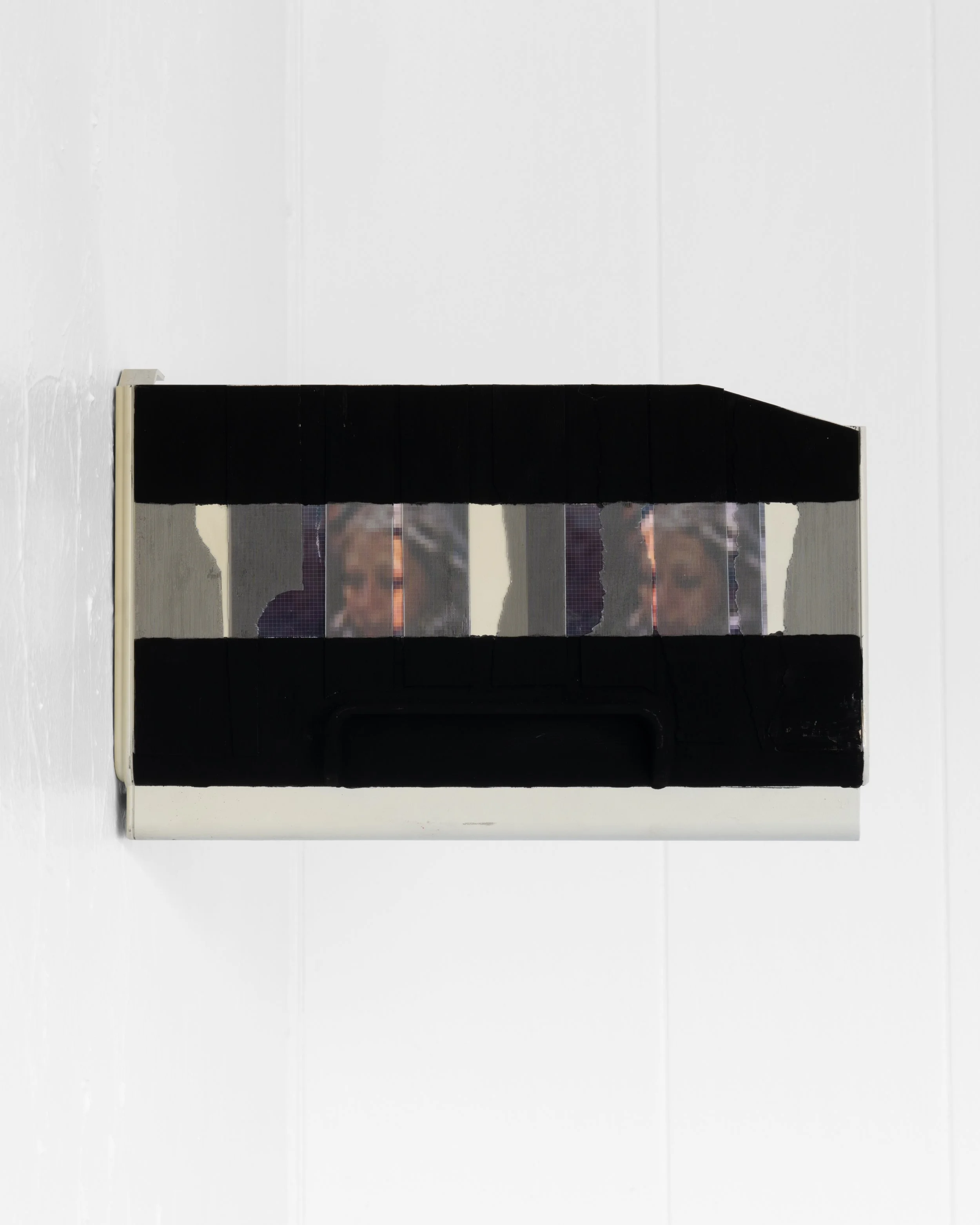Backtrack
Maddie Butler and Enrique Ciapara
Curated by Lizzie Zelter
January 25 - March 1, 2025
Two Rooms is proud to present Backtrack, a two-person exhibition featuring Maddie Butler (b. 1993, St. Paul, MN) and Enrique Ciapara (b. 1972, Tijuana, BC, MX). Through assemblage and painting, Butler and Ciapara mediate images of everyday experiences into forms that reveal the imperfections of the hand. Both artists make by deconstructing - cutting up, repositioning, and painting over. Butler and Ciapara present us with two types of abstractions by embracing the imprecision of digitization and communication.
Spanning sculpture, film, and installation, Butler investigates contemporary relationships in the Internet age. She traces how mechanisms of intimacy function in a society of ever-shifting selves. For Backtrack, Butler created assemblages that index memories of a long-lost friend. Recorded across generations of cellphones and DSLR cameras, these archival videos track both the physical relationship and evolving quality of video technology.
Butler paints on printer paper trays, cover panels, and toner cartridges, repurposing them as containers for cyber remains. Layered within the preordained ridges of mass-manufactured plastic,the detritus is sealed with resin to yield a 3-D collage. Her film stills are printed the same size as broken iPhone screens, circuit boards, and sensors, building a dialogue through scale and proximity.Each title is formatted using “IMG_” followed by a series of numbers and ending with “.m4v”. In parenthesis, Butler adds her own associations, a personal addendum to a system-generated label.
Like much of Butler’s work, the imagery in these assemblages was created through a process of hyper-mediation (a video re-shot and re-framed through multiple devices). This process of digital and physical mutation renders her original protagonist, the unnamed friend at the archive’s center, into an obscure ghost. Across the works, a blurred figure is shown through a car’s side mirror wearing sunglasses, mid dance move, and so highly pixelated that distinguishable features dissolve.
Through painting, printmaking, and drawing, Ciapara engages historical and contemporary image-making traditions. He reveres painting’s ability to communicate knowledge through time, while also appreciating it as an expression of daily existence. His studio feels more like a home than an office, a place where one makes a life by thinking, dreaming, socializing, eating, and drinking.
Ciapara is fascinated by the occult in Medieval art, particularly for its use of stylized, often flat, symbolic forms that deemphasize realistic perspective and anatomy. Blended with Art Informel and Abstract Expressionist influences from the 1940s and 50s, Ciapara’s pictorial language has a distinct vocabulary of open-ended motifs, anti-composition, and evocative mark-making.
His process begins with solid and speckled backgrounds that are covered with built up layers of acrylic paint. Nature, architecture, and figures are presented as confident caricatures of themselves rendered in thick brushstrokes. Just as often, dots, scribbles, and splatters appear. Ciapara’s oeuvre is full of instances of “pentimento,” a presence of earlier images, forms, or strokes that have been changed and painted over. He accepts imperfect revision and as an aesthetic and conceptual philosophy.
Works made over several years fall under one title: “Catálogo de errores” (Catalog of Errors). Each piece is a record of deliberate error, broken down imagery left open to interpretation. In Backtrack, four separate paintings are hung touching one another, inspired by similar arrangements seen in his studio. Ciapara’s approach to content and form exhibits his engagement with Jacques Derrida’s theory of deconstruction as a strategy to interrogate inherited assumptions, in this case, about painting.
Backtrack is a confession of Butler and Ciapara’s shared impulse to dissect and re-envision the tools and images that surround us. Butler mines a vast cyber repository with a materialist approach, resulting in intimate time capsules. Ciapara’s unencumbered gestures and edited surfaces expose an openness to risk and reversing course. Through their embrace of creative backtracking, these artists reveal paradoxes and possibilities of our moment.













